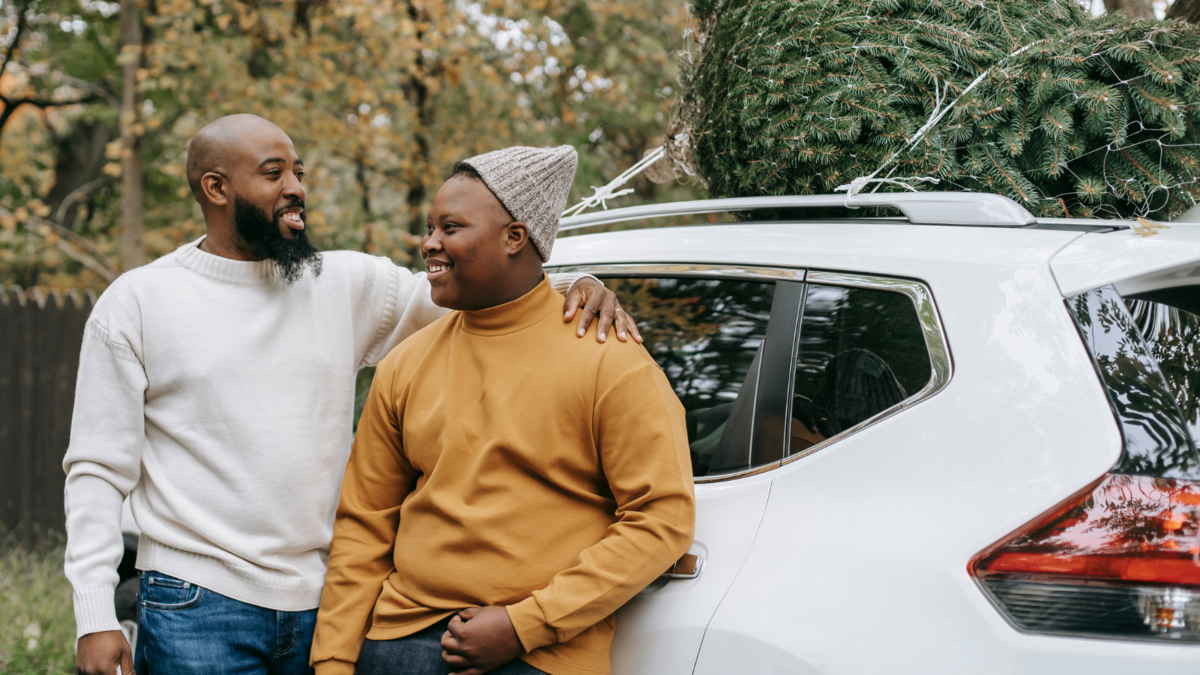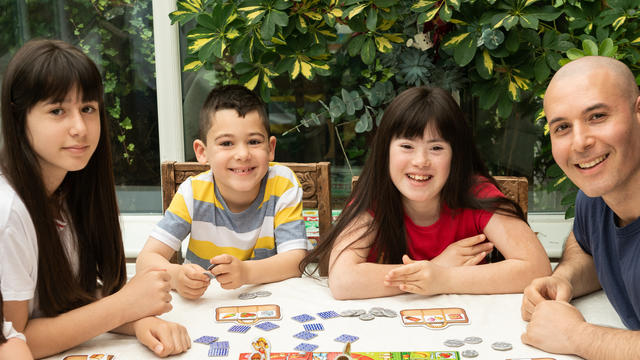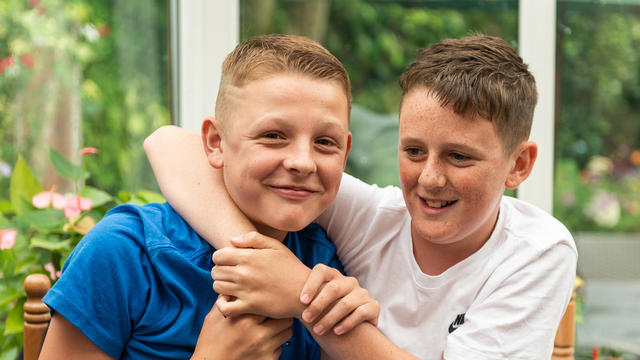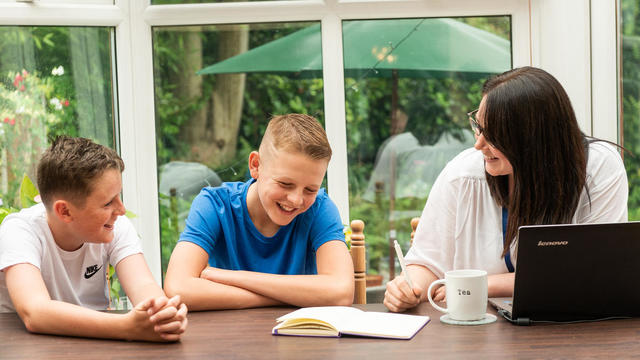Tips and tricks for parents of children with special needs - Christmas edition

In a couple of days, the school winter holidays will be here!
While the winter holidays can be a great time to relax and recharge, they can also bring challenges for children and young people with special needs and their families.
Often the lack of familiarity, structure and routine, normally created by the school day, and the changes resulting from Christmas approaching can create anxiety leading to differences in behaviour that may be difficult to manage for the young person and those around them.
Our expert Therapy and Specialist Support team have put together a handy bank of tips for making life easier for parents, carers and young people during the break. On this page you can find:
We're always at the end of the phone for help and advice. Get in touch with us today
Tips for decorating
Putting up decorations can involve a lot of change inside and outside the places we are decorating. There will be lots of new additions or we may have moved furniture around to accommodate our decorations.
Whilst lots of autistic people like decorations, returning home or walking into school to find these spaces fully decorated could be a bit of a shock, especially if the changes were unexpected. It’s often important to prepare the person for any changes to how the usual space will look before you decorate.

Here are some general ideas that may help. Everyone is different so it’s important to find out what individual triggers and preferences are.
Decorate gradually: For example you could put the Christmas tree in position one day, decorate it the next day, then put up other decorations even later.
Get involved: Involve the young person in changes to the space, e.g. take them shopping for decorations, let them handle decorations, let them see decorations being hung up, or let them help putting them up.
Accomodate: Understand and make accommodations for things that may trigger sensory overwhelm. Christmas scents and candles can often be overwhelming as can fast-flashing fairy lights and ornaments that play sounds and tunes.
Plan: Try and make sure the young person knows how long the decorations will be up. Some autistic people can struggle with the concept of time and may not automatically know that you will be taking the decorations down at some point. Even not knowing when they will be taken down can cause distress. It would help to mark the day on a calendar or schedule or for older children, set a diary reminder on their phone.
Keep away: Keep things that might overload the person away from communal areas, e.g. flashing Christmas lights or noisy ornaments could go in other rooms rather than the living room or their bedroom. You could put a tree at the back of a classroom out of plain view. Have a ‘Christmas-free’ zone in your home or school.
Traditions: Tree chocolates –some young people experience anxiety and become pre-occupied with how many chocolates are on the tree or when they can have them. They may want to eat them all at once. Try making it a game by adding one chocolate per day to the tree for the young person to find. If they don’t like this, you could put the chocolates away and hand them one each day to eat.
Expectations: If furniture needs to be moved around for the tree going up, try not to move everything at once and explain where things will move to. It may help to draw a plan of the room. Once the room is set for Christmas, take a photograph –this could then be used next year to prepare the young person for what the room will look like again in the lead up to decorations going up.
Get them involved: Plan a menu with the young person of what they would like to eat on Christmas day and give it to them a week or so before so that they are prepared. For younger children, they could plan dinner creatively by drawing/sticking pictures of their meal on a paper plate. For older children, plan their meal using a menu template. They may wish to look at some recipes themselves. You couldcook the meal before the day to try it out. Take a photograph asavisualreminder.
Stick to meal times: If possible, try to eat at the same time as you usually would. If this is not possible, prepare for this, e.g. by writing a Social Story, adding the mealtime to the visual schedule for the day, having snacks if the mealtime is later than usual.
Let them choose: If the young person dislikes traditional Christmas Day foods, they may wish to plan a meal that is still special to them. Ameal of all their favourite things to eat instead is a good way to celebrate the occasion.
Remove triggers: Sitting round a table with a larger number of people than usual can be difficult. Be aware of things that may cause sensory overload, e.g. raised noise levels, pulling of Christmas crackers/party poppers and smells from food.
Prepare for change: Prepare the person for any changes to how the usual eating place will look, e.g. different tablecloth, plates, cutlery, placemats/coasters, table decorations. It may support the person if they can help to choose the tableware.
Go for the usuals: If you dress the table, it may help if you keep things the same as usual for the youngperson, e.g. they may prefer to sit in their usual place with their usual placemat, plate and cutlery.
Offer alternatives: You should discuss with the young person whether they would prefer to eat their Christmas dinner in another room, whilst watching something they like on TV. This may, for example, help to ‘mask’ the noise from the dinner table and reduce social pressures.
For meals away: If going to somebody else’s house for Christmas dinner, try to make sure the young person knows what time dinner will be, where they will eat it and what they will eat. They may wish to select a packed lunch to take with them to eat whenever they like.
Plan B: Discuss with the young person whether they wish to eat all or part of their dinner with everyone else. If they would like this, perhaps ask if they would like to sit closest to the door so that if things become too overwhelming, they can quickly leave the room and have some time away in their room. You may have room to set up a small table in the room, just for them. If you are visiting somebody else’s home for dinner, identify a room they can go to if they need some space. They may want to choose some things to take with them if they need some time away from the group, e.g. a few sensory items in a sensory box, a favourite object.
Tips for presents
In relation to receiving presents, if this is difficult during the rest of the year for the young person, then it is no different at Christmas. Presents often mean surprise. Whereas many young people love a gift, some may not enjoy not knowing what's about to happen. Anxiety around presents can be reduced by making it easier for your young person to understand what to expect.
Since Christmas is the time for giving, it will help if your family and friends are aware of any triggers, accomodations and special interests beforehand.

Wrapping options: Leave presents unwrapped unless the person likes unwrapping presents. You could wrap up their presents together as a shared activity. Using wrapping paper printed with things linked to the person’s interests may be an alternative to using Christmas wrapping paper. You can also wrap in clear/patterned cellophane so that the present is not a surprise but the person can still enjoy the unwrapping!
Ready, set, play: Make sure gifts are ready to play with to avoid frustration, e.g. build gifts prior to giving them, put the batteries in before the person opens/receives their present.
Managing surprises: If you do wrap presents put a note/photograph on the gift tag to say what is inside. Encourage friends/family members to do the same. No surprises means less anxiety.
No pressure: Remove the pressures of opening presents in front of people by having a aplace where the young person can open their presents in private. It can feel very uncomfortable opening a present when all eyes are on you.
Perfect match: Buy the person presents related to their interests and passions and encourage friends or family members to do the same.
Something old, something new: If young children are reluctant to open new presents, put a new present next to a favourite item (e.g. a new toy next to a favourite toy).
Set limits: If presents are tricky,set a limit on the number of presents, e.g. one from parents/carers and one from grandparents. Other family members could perhaps give money or vouchers.
Slow and steady: Introduce presents one by one, or a few at a time, instead of all at once. The person may prefer to open presents gradually over the course of a few days.
Manage expectations: If a person finds it difficult to speak, struggles with what to say, finds it hard to open presents in front of peopleor tends to be very honest about whether they like the present or not, then make adjustments for this and talk to family members.
Prepare: For young people who say they want to respond to others when they open their present, but struggle to think what to say in the moment, you could work out with them what they would like to say beforehand and write this on cue cards as a visual reminder, e.g. “Thanks for my present. I’m going to open it later with my others.”






